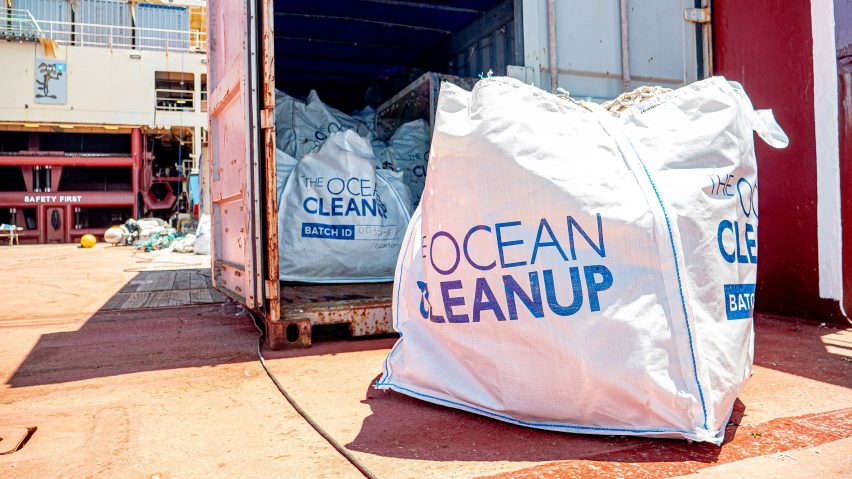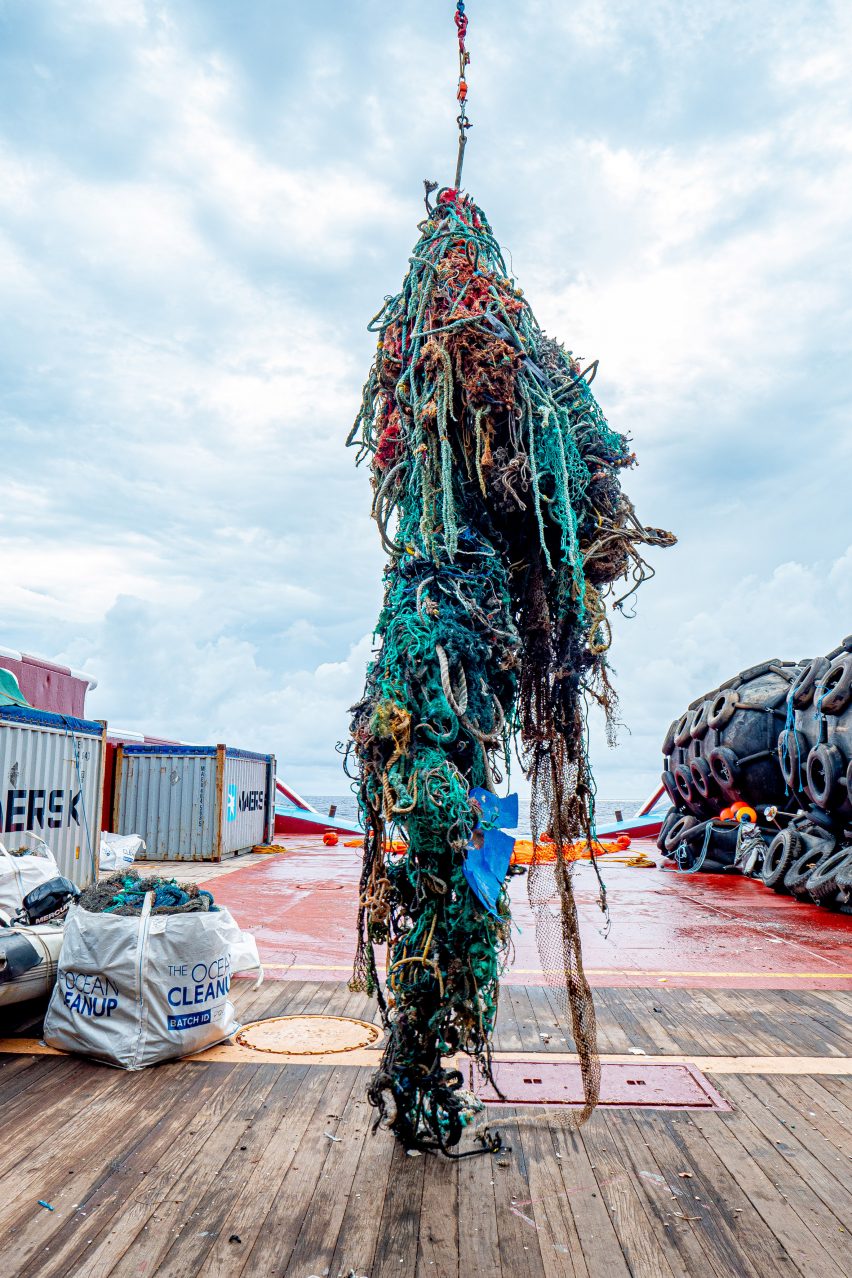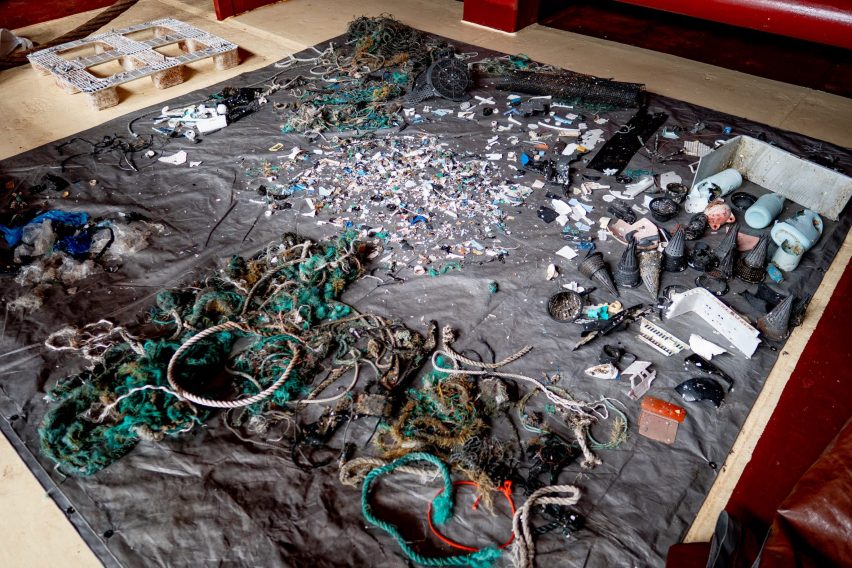
The Ocean Cleanup to make products from collected marine plastic
The Ocean Cleanup has revealed plans to turn the plastic it has collected from the Great Pacific Garbage Patch into "beautiful, sustainable products".
The Ocean Cleanup's founder and CEO Boyan Slat made the announcement last week that plastic collected by the project will be used to make useful products.
"We're going to turn it into beautiful, sustainable products," Slat said at the event on 12 December in Vancouver. "These are not going to be gimmicks. These are going to be products that you will actually want."
Slat revealed the news standing alongside 60 large white bags filled with plastic the organisation has collected.
The ocean waste is the first material that the Dutch nonprofit has collected from the so-called Great Pacific Garbage Patch – an area located between Hawaii and California that contains an estimated 1.8 trillion pieces of plastic, most of which are just a few millimetres in size.
Products will be entirely made of collected waste
Several other organisations are also making products from recycled plastic retrieved from the world's oceans and rivers. This includes Parley for the Oceans which has created trainers, swimwear and football shirts with brands such as Adidas and Stella McCartney.
All the products will be produced under the Ocean Plastic brand, which was trademarked by company founder Cyrill Gutsch.

However, while these items are predominantly made from plastic that has been intercepted on its way into the ocean, The Ocean Cleanup's items will be entirely made of waste sourced from the waters.
"I believe we can use this trash to turn a problem into a solution by transforming this unique material into a beautiful product," said Slat, who added that he intends the products to raise awareness about The Ocean Cleanup project.
"As most people will never go to the Great Pacific Garbage Patch, through these products, we aim to give everyone the opportunity to take part in the cleanup," he said.
The Ocean Cleanup encounters "several ups and downs"
The Ocean Cleanup will next try to create a method of verifying that plastic is collected from the ocean and not elsewhere, and will launch a new public standard to verify such ocean plastic. It will work with Norwegian company DNV GL to develop and employ the blockchain to analyse collection processes.
The nonprofit intends to launch the plastic products in September 2020, with all proceeds used to support The Ocean Cleanup project.

Slat founded the Ocean Cleanup in 2013 with the ambition of clearing 90 per cent of plastic waste from the world's oceans, using fleets of 600-metre-long floating rigs.
The recent announcement followed what the company describes "several ups and downs" with the project. These include its first sea-trial being abandoned late last year following a fracture in the tube.
Engineers discovered that as the rig was moving slower than the plastic in the ocean, much of the waste it collected was floating back into the sea.
Experts skeptical of The Ocean Cleanup
The mission was relaunched in June with a new, improved tech called System 001/B. The company revealed in the following October that it had started to successfully collect plastic waste.
Critics, however, are skeptical of The Ocean Cleanup's approach to ridding the plastic from waters.
Speaking to Dezeen earlier this year, architect and plastic recycling expert Arthur Huang said that The Ocean Cleanup "cannot be a plausible solution", and Italian environmental journalist Cristina Gabetti called it "a dream that seduced many people".
Designers and environmentalists also questioned its recent decision to start burning collected plastic in waste-to-power plants, saying the move "makes no sense" and could be more harmful for the environment than good.